Understanding Social Marketing and How to Deploy It Effectively
- Published on
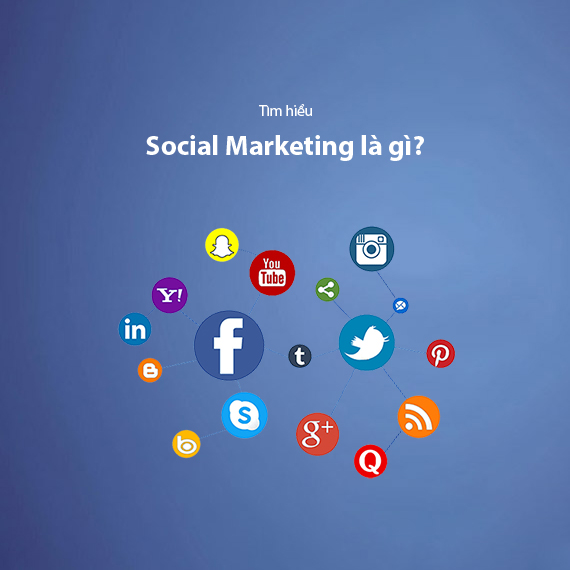
- What Is Social Marketing?
- The Role of Social Marketing in Comprehensive Marketing Strategies
- Benefits of Social Marketing for Businesses
- Common Types of Social Marketing
- Social Networks
- Social News
- Social Bookmarking Sites
- Social Blog Comments and Forums
- Social Microblogging
- Effective Social Marketing Channels
- Facebook - The Versatile Platform
- Instagram - Aesthetic and Visual Platform
- TikTok - The Short Video Platform
- YouTube - Long-Lasting Video Platform
- Pinterest - Inspiration and Idea Platform
- Effective Social Marketing Implementation Process
- Market Analysis and Target Audience Research
- Set Clear and Specific Goals
- Develop Attractive Content and Messaging
- Choose the Right Platforms for Deployment
- Execute and Continuously Monitor the Campaign
- Evaluate and Optimize
- Practical Examples of Successful Social Marketing Strategies
- Apple: “Shot on iPhone”
- Coca-Cola: “Share a Coke”
- Dove: “Real Beauty”
- Nike: “You Can’t Stop Us”
- Tips and Emerging Trends in Social Marketing
- Leverage Artificial Intelligence (AI) and Chatbots
- Create User-Generated Content (UGC)
- Optimize Short-Form Video Content
- Incorporate Augmented Reality (AR) and Virtual Reality (VR)
- Leverage Micro-Influencers
- Boost Engagement Through Livestreams
- Use Data and Analytics to Optimize Campaigns
- Integrate Social Commerce into Campaigns
- Conclusion
- Key Points to Remember:
- Advice for Businesses:
- Take Action Today!
What Is Social Marketing?
In an era where social media has become an integral part of daily life, Social Marketing emerges as a vital strategy that helps businesses build their brand, increase engagement, and boost sales. So, what exactly is Social Marketing, and why is it so important?
Social Marketing, also known as social media marketing, involves using platforms such as Facebook, Instagram, Twitter, LinkedIn, and TikTok to promote brands, increase product awareness (Brand Awareness), and encourage specific user actions like purchasing or signing up for services. It is not just a promotional tool but also a bridge that helps businesses connect with customers, build trust, and create communities around their brand.
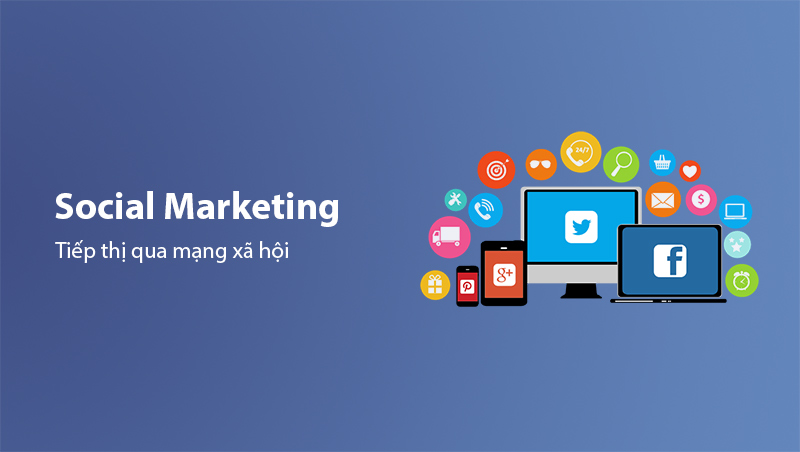
The Role of Social Marketing in Comprehensive Marketing Strategies
-
Increase Brand Recognition:
Social media platforms are ideal for bringing your brand closer to millions of potential users. Through creative content and consistent interaction, businesses can sustainably build their brand image. -
Enhance Engagement and Connection:
With tools like comments, shares, and messages, Social Marketing allows businesses to communicate directly with customers. This is an effective way to listen to feedback, address concerns, and improve services. -
Drive Sales:
Effective Social Marketing campaigns not only raise brand awareness but also encourage purchasing behaviors through promotions, exclusive offers, or content that calls for action. -
Support SEO and Website Optimization:
An active presence on social media can increase organic traffic to your website and improve rankings on search engines.
Read more: How to Optimize Your Website for SEO Effectively.
Social Marketing is not just a marketing strategy but also a powerful tool to enhance a business's overall effectiveness in the digital age.
Benefits of Social Marketing for Businesses
Social Marketing offers exceptional benefits, making it easier for businesses to reach and maintain relationships with customers in the digital era. Below are some outstanding advantages:
-
Unlimited Reach and Connection:
With over 4.4 billion social media users projected by 2025 (according to Statista), platforms like Facebook, Instagram, or TikTok allow businesses to reach a large number of potential customers. The ability to spread messages through shares and interactions helps businesses expand their influence without spatial or temporal limits. -
Build a Brand and Create a Unique Identity:
A well-designed Social Marketing strategy helps brands leave a lasting impression in customers' minds. Sharing creative and consistent content increases Brand Awareness and highlights the business's image in the market. -
Increase Sales Revenue:
Social Marketing not only attracts customers but also drives shopping behaviors. For example, discount campaigns, highly interactive ads, or User-Generated Content (UGC) can prompt users to move from interest to action. -
Cost-Effective Yet Highly Efficient:
Compared to traditional advertising, Social Marketing offers superior results at much lower costs. Utilizing free tools or running optimized ads can yield the best outcomes. -
Support SEO and Boost Website Traffic:
When content is widely shared on social media, natural traffic (Organic Traffic) to the website increases. This not only helps improve search engine rankings but also enhances user experience.
Read more: How to Increase Organic Traffic Effectively.
- Promote Community Actions:
Social Marketing is also an effective way to convey meaningful messages and encourage community activities. This not only enhances the brand image but also strengthens the relationship between businesses and customers.
Social Marketing has proven to be a powerful and essential tool for any business aiming for sustainable growth in a highly competitive environment.
Common Types of Social Marketing
Currently, Social Marketing comes in various types, each with its distinct approach and suitability for specific business goals. Here are some popular Social Marketing types to know:
Social Networks
This is the most common type of Social Marketing, using social media platforms like Facebook, Instagram, LinkedIn, and Twitter to connect with customers.
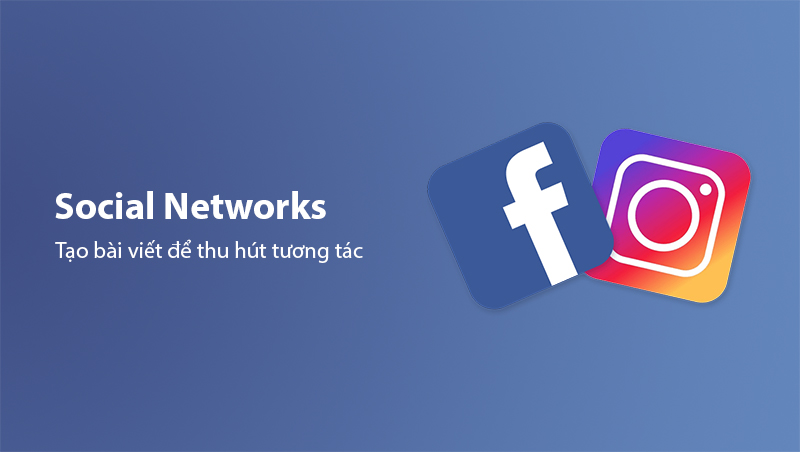
- How it works: Businesses create engaging content (posts, images, videos) to attract interactions, likes, and shares.
- Measuring effectiveness: Based on the number of interactions, shares, and customer participation.
- Example: A fashion brand can use Instagram to post product images with hashtags like #OOTD (Outfit of the Day) to increase natural reach.
Social News
Social News focuses on sharing information through social news or entertainment sites like Reddit or Digg.

- How it works: Post content in the form of articles, current news, or trending topics. Users can comment, rate, or share articles.
- Measuring effectiveness: Based on views, comments, and how viral the post is.
- Example: An article titled "How to Optimize SEO for Small Businesses" posted on a forum or social news site can attract significant user interest.
Social Bookmarking Sites
This type allows users to store, manage, and share content or data on sites like Pinterest, StumbleUpon, or Pocket.
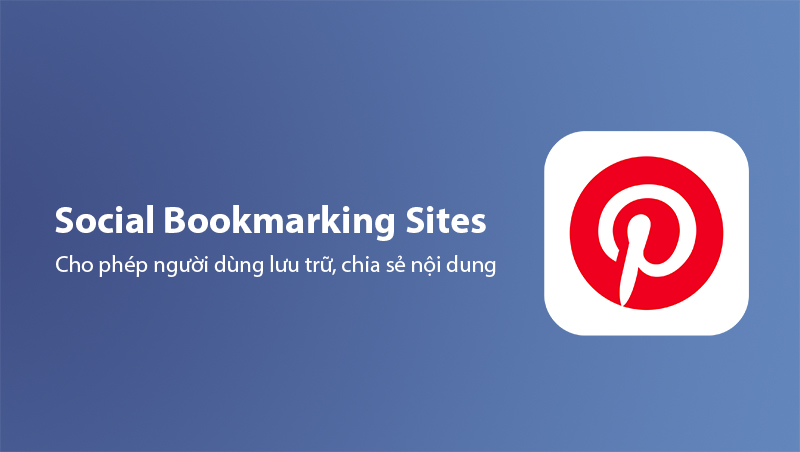
- How it works: Users can "bookmark" useful content for later use and share it with the community.
- Measuring effectiveness: Based on the number of bookmarks, shares, and interactions.
- Example: A furniture company uploads images of room designs on Pinterest, linking back to their website for customers to explore further.
Read more: How to Optimize Pinterest to Increase Website Traffic.
Social Blog Comments and Forums
Blogs and forums are ideal places to host conversations, discussions, or knowledge-sharing between businesses and customers.
- How it works: Interact through comments, answer questions, or create discussion topics related to products/services.
- Measuring effectiveness: Based on user participation in conversations and traffic from blogs/forums to the website.
- Example: A technology forum allows businesses to share information about new products or answer users' technical questions.
Social Microblogging
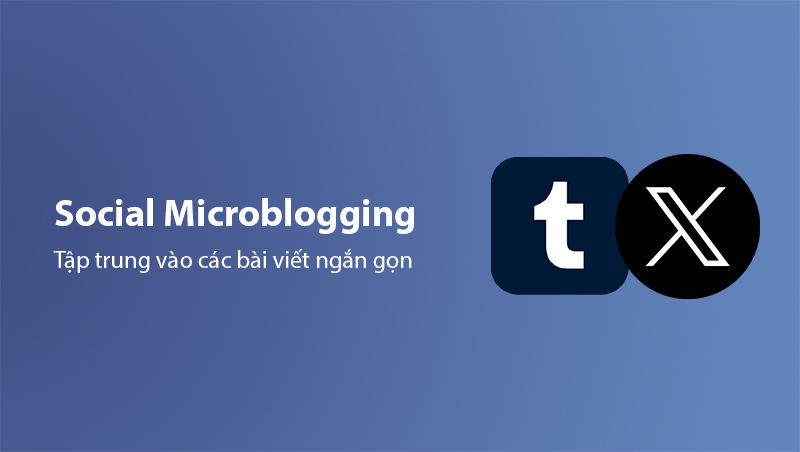
Microblogging focuses on concise, direct posts on platforms like Twitter or Tumblr.
- How it works: Post quick messages, images, videos, or links within character limits.
- Measuring effectiveness: Number of retweets, likes, and how viral the message is.
- Example: A flash sale announcement lasting only 24 hours posted on Twitter with a purchase link.
Social Media Sharing
This type emphasizes sharing multimedia content like images and videos on platforms like YouTube, TikTok, or Snapchat.
- How it works: Create and share attractive videos, dynamic images to captivate viewers.
- Measuring effectiveness: Based on views, shares, and user feedback.
- Example: A product introduction video on TikTok with a trending hashtag helps increase brand visibility.
Each type of Social Marketing has its strengths. Depending on the goals and target audience, businesses can choose the most suitable type.
Effective Social Marketing Channels
To execute a successful Social Marketing campaign, choosing the right channels that align with the target audience and campaign goals is crucial. Below are the most popular and effective channels today:
Facebook - The Versatile Platform
Facebook is the largest social media platform in the world, suitable for nearly every type of business.

- Ideal audience: Suitable for both B2C and B2B, primarily users aged 25–45.
- How to use effectively:
- Run targeted ads (Facebook Ads) to reach potential customers.
- Increase engagement through captivating content such as posts, videos, and livestreams.
- Example: A small business can launch an ad campaign introducing products with short videos and CTAs (Call-to-Actions) like "Shop Now" or "Learn More."
Instagram - Aesthetic and Visual Platform
Instagram is especially effective in industries related to fashion, food, travel, and beauty.
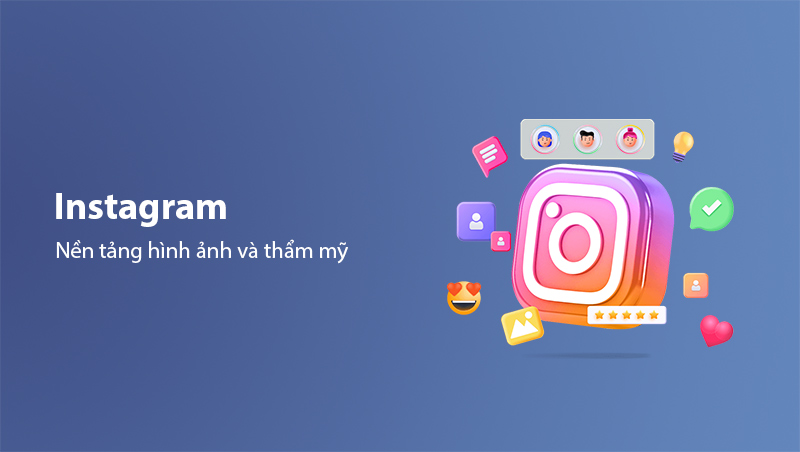
- Ideal audience: Younger users aged 18–34, who love visual and creative content.
- How to use effectively:
- Leverage high-quality images and videos.
- Use Instagram Stories and Reels to boost interaction.
- Create campaign hashtags to spread content.
- Example: A cosmetics brand can share makeup tutorial videos with hashtags like #MakeupTips to attract users.
Read more: Instagram SEO Strategies to Boost Engagement in 2025.
TikTok - The Short Video Platform
With its rapid growth, TikTok is becoming a highly promising Social Marketing channel, especially among Gen Z.

- Ideal audience: Younger people aged 16–30 who enjoy creative and entertaining content.
- How to use effectively:
- Create short, engaging videos with viral potential.
- Join or initiate challenges using hashtags.
- Example: A beverage brand could launch a challenge like DrinkChallenge, encouraging users to create creative videos.
Read more: How to Create Viral Content on TikTok.
LinkedIn - The Professional Platform
LinkedIn is an ideal platform for connecting with professionals and other businesses. It is particularly effective for B2B Social Marketing.
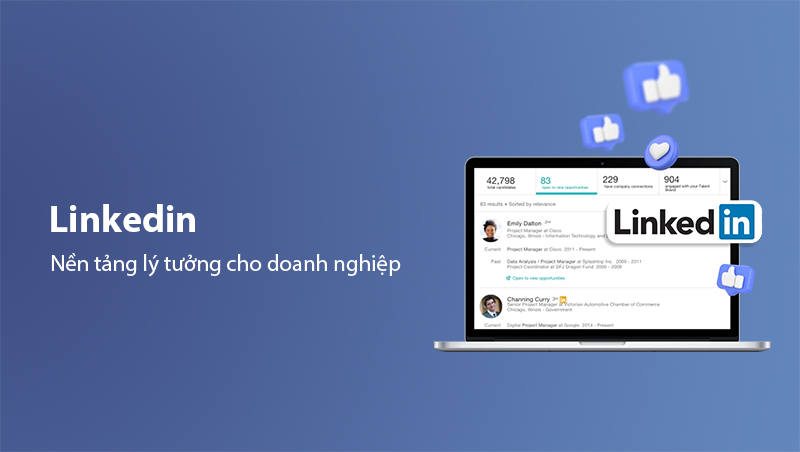
- Ideal audience: Companies offering B2B products/services, recruitment, or building corporate branding.
- How to use effectively:
- Share in-depth content such as articles and industry reports.
- Use LinkedIn Ads to target specific audiences.
- Example: A software company could post case studies showcasing how their product improves workplace efficiency for businesses.
YouTube - Long-Lasting Video Platform
YouTube is one of the most powerful platforms for creating long-lasting video content.
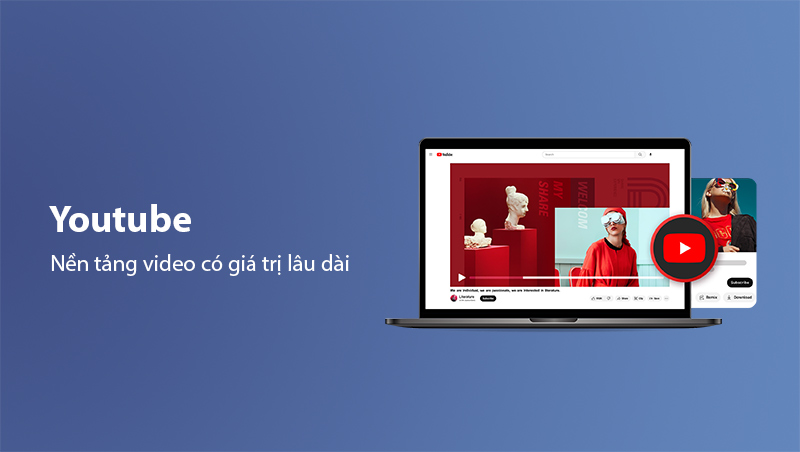
- Ideal audience: Users of all ages seeking educational, entertainment, or product review content.
- How to use effectively:
- Create tutorials or product/service explainer videos.
- Use YouTube Ads to boost views and channel subscriptions.
- Example: A tech brand can upload detailed “How to Use” videos to attract potential customers.
Pinterest - Inspiration and Idea Platform
Pinterest is a Social Marketing channel particularly suitable for businesses offering products/services related to design, creativity, or lifestyle.

- Ideal audience: Mainly women aged 25–44 who love finding new ideas.
- How to use effectively:
- Create and share boards featuring content related to products/services.
- Attach product links to images to drive traffic to the website.
- Example: A furniture brand could post images of modern living room designs with purchase links.
When implementing Social Marketing, base your channel choice on the target audience and product/service characteristics. Combining multiple channels while optimizing content for each platform will help you achieve maximum campaign effectiveness.
Effective Social Marketing Implementation Process
To build a successful Social Marketing campaign, businesses need to follow a systematic process to ensure the right audience is reached while optimizing resources. Below are detailed implementation steps:
Market Analysis and Target Audience Research
Understanding customers is always the first and most important step in any campaign.
- Market analysis: Evaluate current trends, user behavior on social media platforms, and analyze competitor activities.
- Identify target customers: Choose segments based on demographics, psychographics, behaviors, and geography. For instance, a cosmetics brand might target women aged 18–35 interested in beauty and skincare.
- Supporting tools: Use tools like Google Analytics, Facebook Insights, or Sprout Social to gather user data.
Set Clear and Specific Goals
Campaign goals should be clearly defined based on the SMART (Specific, Measurable, Achievable, Relevant, Time-bound) model.
- Example: "Increase Instagram followers by 20% within the next 3 months" or "Achieve 10,000 website visits from TikTok ads within a month."
Develop Attractive Content and Messaging
Content is the key determinant of a campaign’s success.
- Content ideation: Focus on topics that interest the target audience, from tutorials and product images to value-sharing posts.
- Define the core message: The message should be concise, memorable, and convey the value the business wants to deliver.
- Example: A campaign about environmental protection could use the message "Small Actions, Big Changes" to draw attention.
Choose the Right Platforms for Deployment
Each social media platform has its unique characteristics. Businesses should select channels based on the target audience:
- Instagram and TikTok: Suitable for visual content like images and short videos.
- LinkedIn: Focus on professional content, ideal for B2B.
- Facebook and Twitter: Versatile, suitable for various content types, from text to images and videos.
Execute and Continuously Monitor the Campaign
- Post content on schedule: Use a content calendar to maintain consistency and capitalize on "golden hours" when users are most active.
- Run paid ads (if needed): Boost reach and conversions through tools like Facebook Ads, Google Ads, or TikTok Ads.
- Monitor performance: Utilize analysis tools like Hootsuite, Google Analytics, or HubSpot to track campaign effectiveness.
Evaluate and Optimize
After the campaign ends or during its execution, measure and evaluate effectiveness for optimization:
- Metrics to track:
- Reach: Number of people who saw the content.
- Engagement: Likes, comments, shares.
- Conversions: Website visits, orders, etc.
- ROI: Measure profit relative to costs.
- Adjust strategy: If performance falls short of expectations, consider tweaking the message, content, or ad budget allocation.
Read more: Guide to Optimizing Facebook Ad Campaigns.
A systematic Social Marketing process not only helps businesses achieve goals but also builds lasting relationships with customers, paving the way for future campaigns.
Practical Examples of Successful Social Marketing Strategies
One of the most effective ways to understand Social Marketing is through practical examples. Below are some standout campaigns that demonstrate how major brands have successfully implemented Social Marketing strategies.
Apple: “Shot on iPhone”
Apple skillfully leveraged the “Shot on iPhone” campaign to tap into User-Generated Content (UGC), enhancing customer trust and engagement.
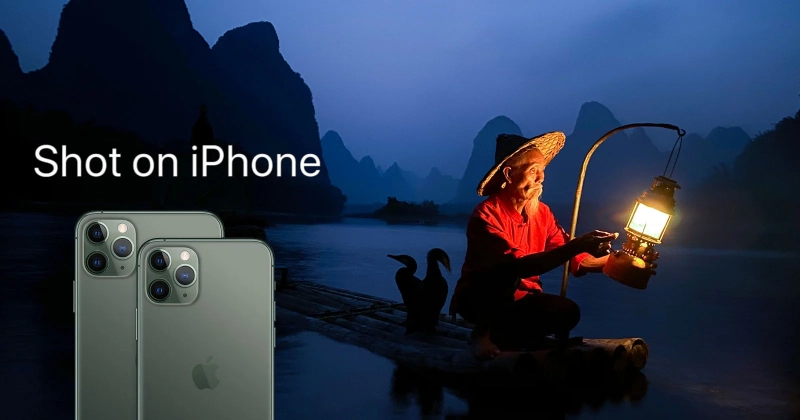
- Implementation:
- Apple encouraged users to share stunning photos captured with their iPhones on social media using the hashtag #ShotoniPhone.
- The most impressive photos were selected by Apple and shared on their official accounts, even featured in global ad campaigns.
- Results:
- Over 12.9 million posts using the hashtag #ShotoniPhone on Instagram.
- The campaign not only highlighted the iPhone's camera quality but also fostered a loyal user community.
Lesson learned: Leverage customer content to amplify reach and strengthen brand connection with users.
Coca-Cola: “Share a Coke”
The “Share a Coke” campaign by Coca-Cola is an outstanding example of brand personalization.
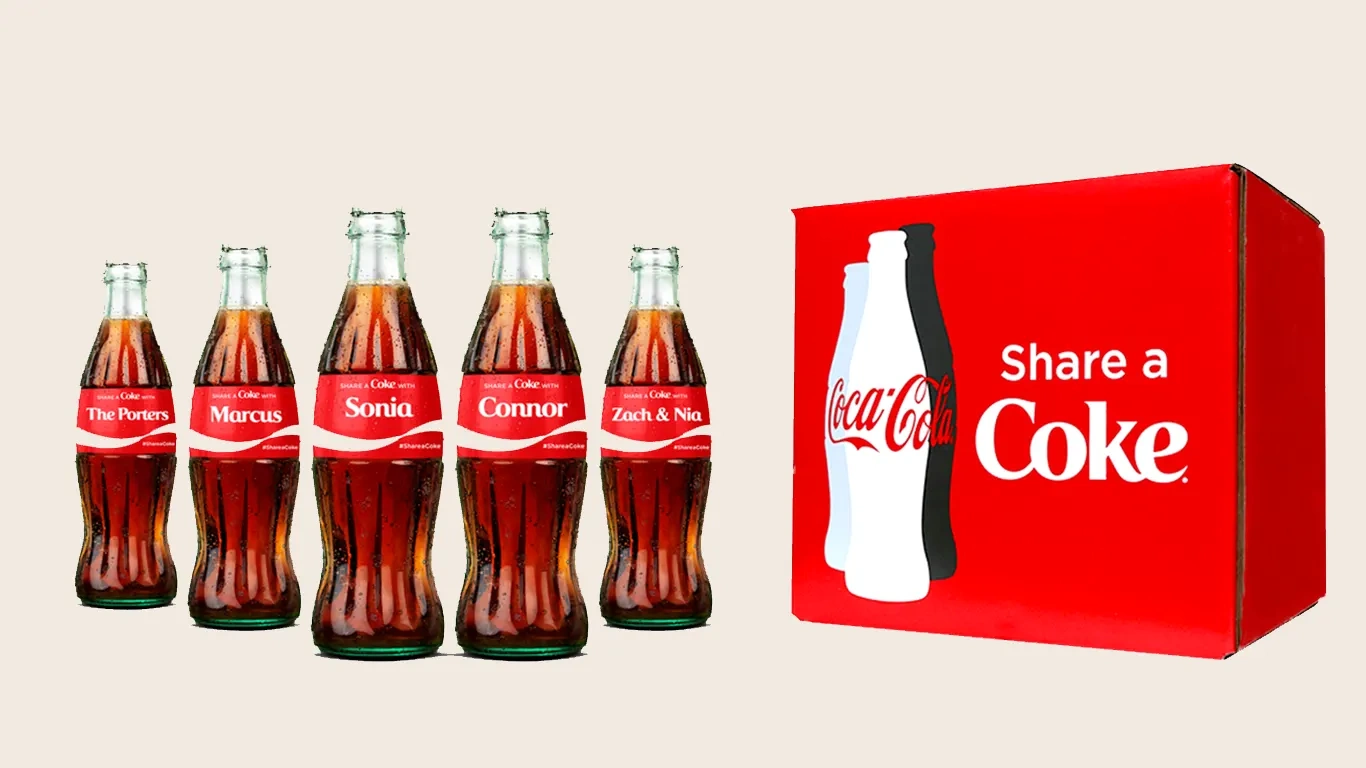
- Implementation:
- Coca-Cola printed individual names on their bottles, encouraging customers to find bottles with their names or those of friends and family.
- Users shared images of personalized Coca-Cola bottles on social media with the hashtag #ShareaCoke.
- Results:
- Sales increased by 2% within the first few months in the U.S. market.
- Millions of interactions were generated on social media, boosting brand recognition.
Lesson learned: Use personalization to spark interest and drive user engagement.
Dove: “Real Beauty”
Dove’s “Real Beauty” campaign redefined beauty standards and received widespread community support.
- Implementation:
- Dove created videos and images promoting natural beauty and encouraging women to feel confident in their appearance.
- These materials were widely shared on platforms like YouTube and Facebook.
- Results:
- The campaign’s “Evolution” video garnered over 68 million views on YouTube.
- Dove experienced a significant increase in product sales and built a positive brand image.
Lesson learned: Create campaigns with meaningful social messages that align brand values with community interests.
Nike: “You Can’t Stop Us”
Nike has always been a leader in using Social Marketing to inspire users. The “You Can’t Stop Us” campaign is a prime example.

- Implementation:
- Nike released a video featuring clips of famous athletes and ordinary individuals overcoming challenges in life.
- The video was widely shared on YouTube and Instagram, paired with a message encouraging users to face adversity.
- Results:
- Over 50 million views in the first week of the video’s release.
- Nike reinforced its position as a brand that supports effort and athletic spirit.
Lesson learned: Use powerful storytelling to convey meaningful messages and engage customers.
These examples not only demonstrate the effectiveness of Social Marketing but also provide inspiration for businesses looking to implement strategies on social media. Most importantly, ensure that your message aligns with your brand values and meets your target audience's expectations.
Tips and Emerging Trends in Social Marketing
To maximize the effectiveness of Social Marketing campaigns, businesses need to continuously update new trends and apply innovative strategies. Below are some useful tips and prominent trends to help you stay ahead in this field:
Leverage Artificial Intelligence (AI) and Chatbots
- AI Applications: AI can analyze user data on social media, predict behaviors, and provide personalized content tailored to individual customers.
- Smart Chatbots: Use Chatbots on platforms like Messenger or Instagram to provide 24/7 customer support, enhance user experience, and save resources.
- Example: An online fashion store can use Chatbots to recommend products or process orders instantly.
Create User-Generated Content (UGC)
UGC is one of the most effective ways to build trust and strengthen connections with customers.
- How to do it: Encourage customers to share photos or videos using your products, then repost these on your official channels with a thank-you note.
- Example: A cosmetics brand could host a giveaway program for those who share their experience using the product with the brand hashtag.
Optimize Short-Form Video Content
Platforms like TikTok, Instagram Reels, and YouTube Shorts are exploding with short-form video content.
- Tip: Create entertaining or educational videos with attention-grabbing music and effects to immediately capture attention.
- Trend: Behind-the-scenes content, quick tips, or viral challenges tend to have high sharing rates.
Incorporate Augmented Reality (AR) and Virtual Reality (VR)
- AR: Enable customers to experience products directly on their phones, such as trying on glasses, makeup, or placing furniture in their real space.
- VR: Create virtual environments for customers to explore your products or services in a fun way.
- Example: A furniture store can use AR to let customers see how a sofa would fit in their living room.
Leverage Micro-Influencers
Micro-influencers (with 10,000–50,000 followers) often have higher engagement rates than large influencers.
- Benefits: They reach targeted audiences and create a sense of relatability and trust.
- How to use: Collaborate with micro-influencers in your industry to promote products or services through authentic reviews.
Boost Engagement Through Livestreams
Livestreaming has become a significant trend to connect with customers.
- Benefits: Create a direct communication space, build trust, and encourage immediate purchasing behavior.
- Tip: Host livestreams to launch products, answer questions, or offer special promotions during the stream.
Use Data and Analytics to Optimize Campaigns
Data is the key to understanding user behavior and improving Social Marketing strategies.
- How to do it: Track critical metrics like reach, engagement, conversion, and ROI using tools like Google Analytics, Hootsuite, or Sprout Social.
- Adjustments: Based on analytics, optimize content, posting schedules, or advertising strategies for the best results.
Integrate Social Commerce into Campaigns
Social Commerce, or shopping directly through social media, is becoming increasingly popular.
- Tip: Add direct purchase features to posts or livestreams.
- Example: Use Instagram Shopping or Facebook Marketplace so customers can purchase products with just a few clicks.
By applying the above tips and trends, businesses can not only keep up with the fast-changing landscape of Social Marketing but also maximize campaign effectiveness. Be flexible and creative in implementation to gain a competitive edge in the market.
Conclusion
Social Marketing is not just a marketing tool but a powerful bridge that helps businesses connect with customers, build brands, and increase revenue. As social media continues to evolve, understanding and applying the right Social Marketing strategies will help businesses stay ahead in their field.
Key Points to Remember:
- What is Social Marketing? It is a form of marketing that leverages social media platforms to promote brands, increase recognition, and drive user behavior.
- Benefits of Social Marketing: Boost engagement, increase brand recognition, support SEO, and build sustainable customer relationships.
- Popular Types: From Social Networks to Social News and Social Media Sharing—each type has its unique measurement and application methods.
- Emerging Trends: Leverage AI, UGC, short videos, livestreams, and Social Commerce to optimize campaign results.
Advice for Businesses:
- Build a clear plan focused on the target audience and campaign objectives.
- Use creative content tailored to each social media platform.
- Monitor and analyze data to continually optimize campaigns.
- Stay updated on new trends to lead in the competitive market.
Take Action Today!
Start implementing a Social Marketing campaign tailored to your business today. If you need more information or support, check out the related articles below:
With the continuous growth of technology and social media, Social Marketing is the key to building a strong brand and achieving sustainable growth in the future.
Latest Posts

Lesson 26. How to Use break, continue, and return in Java | Learn Java Basics
A guide on how to use break, continue, and return statements in Java to control loops and program execution flow effectively.

Lesson 25. The do-while Loop in Java | Learn Basic Java
A detailed guide on the do-while loop in Java, including syntax, usage, examples, and comparison with the while loop.

Lesson 24. How to Convert Decimal to Binary in Java | Learn Basic Java
A guide on how to convert numbers from the decimal system to the binary system in Java using different methods, with illustrative examples.

Lesson 23. How to Use the While Loop in Java | Learn Java Basics
Learn how to use the while loop in Java with syntax, real-world examples, and practical applications in Java programming.
Related Posts
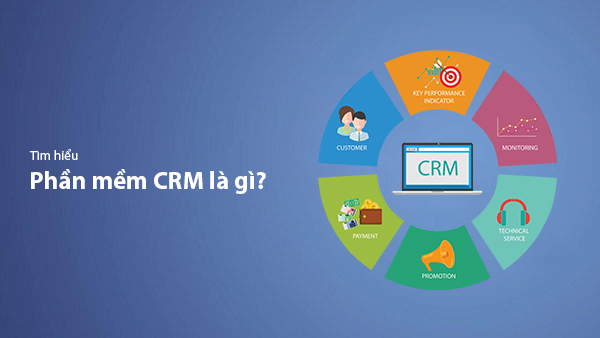
What is CRM Software? Top 15+ Best Customer Relationship Management Software
Discover the definition of CRM software, its role in customer relationship management, and a list of 15+ top CRM solutions to help businesses enhance customer service performance and achieve sustainable growth.

What Is Local Guide? Benefits of Becoming a Local Guide on Google Maps
Local Guide is a community program by Google Maps where users can contribute reviews, photos, and location information to improve map data. This article explains what Local Guide is and the benefits of being an active member.

What is Zalo OA? A Detailed Guide to Creating Zalo Official Account for Businesses
Zalo Official Account (Zalo OA) is a crucial tool that helps businesses connect with customers and optimize their online business operations. This article provides a step-by-step guide on how to create a Zalo OA from A to Z.

What is Zalo Ads? A Guide to Running Effective Zalo Ads
Discover what Zalo Ads are and learn how to run effective Zalo advertising campaigns to reach customers and boost sales in the digital era.

